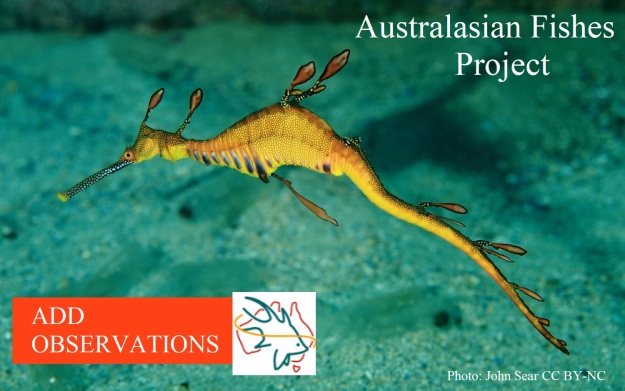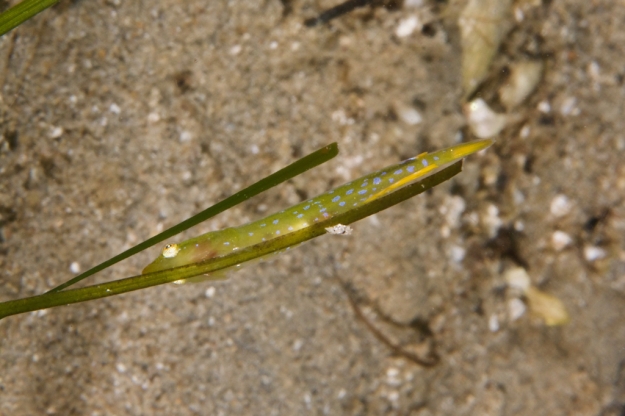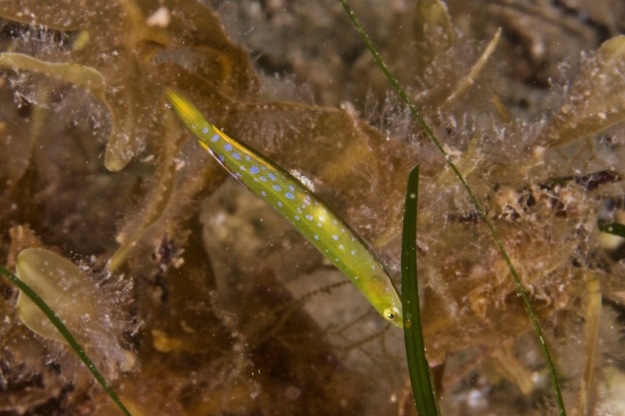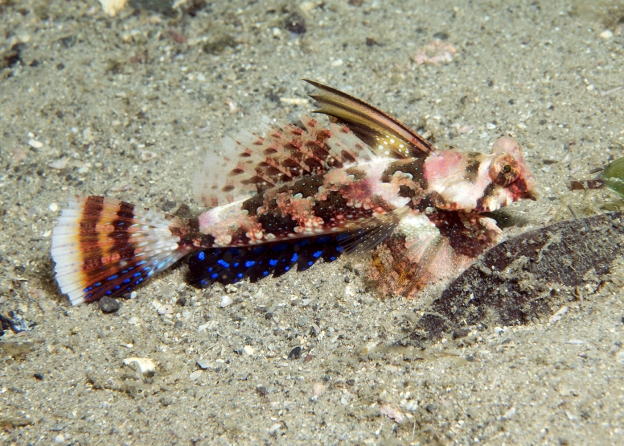
December 2017
Fish Thinkers has just become an official project supporter of Australasian fishes, which as someone that has a slight obsession with fish, I am rather happy about. Set up by the Australian Museum in 2016, it is a really nice example of a citizen science project that is open to all and it is getting lots of interesting results.
The project allows people to:
- record observations of fish in Australia and New Zealand.
- have those observations identified or a suggested ID confirmed.
- help identify fish that others have observed.
The project is a nice way of keeping a record of all the fish you have seen or captured, with a nifty map reference showing where and when you made the observation—this is the underwater equivalent of bird-watching (except it is better because it’s fish, obviously. See #birdvsfish for this old battle) with the added bonus that the data compiled has many uses for scientists and contributes data on marine environment that anyone can access and use. In just the year or so that Australasian fishes has been running more than 19,737 observations of 1690 species have been uploaded to the project, by over 720 people.


Rebecca Lloyd logged this tiny Clingfish (Family Gobiesocidae), potentially an undescribed species. Photo: R. Lloyd (CC BY-NC)
There are already numerous stories of fish in places they have never been seen before, new species, fish with unusual colouration or appearance, strange behaviours and more. Below, Mark McGrouther (manager of the Australasian fishes project) lists some of the highlights among the many observations.
- Range extensions – 34 (view example)
- First records – 11 (view example)
- Courtship/reproduction – 10 (view example)
- Behavioural observations – 6 (view example)
- Biological information – 4 (view example)
- Damage/injuries – 4 (view example)
- Diet/feeding – 4 (view example)
- Tagged fishes – 3 (view example)
- Mass strandings – 2 (view example)
- Parasites- 2 (view example)
- Potential new species – 2 (view example)
- Possible aquarium release – 1 (view example)
It is not just about the rare or unusual species though. Participants are encouraged to log common species and lots of them if they are present. These sorts of details are useful in many ways, including making historical comparisons e.g. if a species is logged regularly in large numbers at a specific location over the next 10 years but then disappears from a location, then these data can provide greater certainty than anecdotal word of mouth evidence. Without people logging these common species a change like this may not even be noticed.
“Like all such projects it is fuelled by interested individuals, who share a passion for nature and a willingness to contribute to the global knowledge of our marine environment and its sustainability. There are few projects which illustrate this dynamic as clearly as Australasian Fishes, as its recent success clearly shows”. Australasian Fishes member, Harry Rosenthal.
I really encourage you to get involved in this project. Its a good way of confirming an ID and it doesn’t matter who you are, whether you are a snorkeler, puddle pirate*, SCUBA diver, recreational fisher, commercial fisher or only ever make it as far as the tide line at the beach, you can still be a part of it. There is a very friendly little community being built up and it really is quite fun – for some the fun is trying to be the first to log a species, or to log the most species, at a location and for others its just building up a list of species they have seen. So download the iNaturalist app (itunes or android), sign up and start logging observations of fish you see straight away, it’s that easy…and lastly don’t forget to swing by fish thinkers and let us know what you have found and logged!

This Whitespotted Dragonet (Orbonymus rameus) was spotted by Dave Harasti in Nelson Bay, NSW, extending its known range south by 350 km. Photo D. Harasti (CC BY-NC)
Sightings can also be logged with video supporting evidence like this footage that I recently posted. This is the first underwater footage of this particular species of dogfish in the wild that Australian museum ichthyologists have seen so it is a rare capture.
How to signup:
The signup process is quite simple. 1) join iNaturalist on the web or download the app and join, 2) join the Australasian fishes project (See the photo or the video below for the full details.

Once you have signed up for the iNaturalist site or app, head to the Australasian fishes page and click “join this project” in the top right hand corner (purple circle in this picture). One of the admins will then accept you when they are next online. You can begin logging fish straight away though.
**Puddle Pirate: someone that frequents rock pools or other shoreline bodies of water to look at and ID fish and other aquatic creatures (generally releasing them after a photo or two). This is a surprisingly common past-time and in locations that aren’t open to swells it is an excellent way for to introduce kids to the marine realm—pack a fish friendly net, a clear container and you are set!

Pingback: Fish Thinkers online: 2018 in review | Fish Thinkers
Pingback: How people power is changing science
I’ve been meaning to get the iNaturalist app since I did the pollinators count last year. Now I know the fishes are on it, I’m in!
LikeLiked by 1 person
Nice one Cat. Will be looking out for some fishy observations 🙂
LikeLike